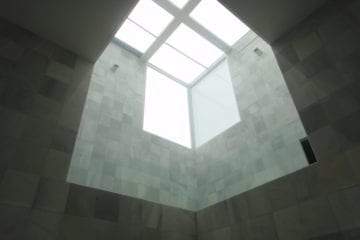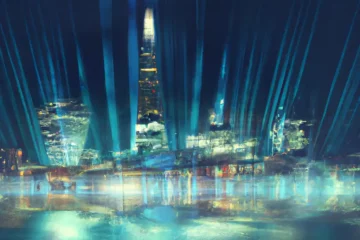How Donald Trump transformed New York in his own way
Donald Trump transformed New York
Apart from having been president of the United States, he is one of the largest real estate developers in the American country. Donald Trump literally transformed New York. His eccentric personality has infused his projects, transmitting an aesthetic of megalomaniac excesses more or less modulated by the architects who work for him.
Trump Tower

The Trump Tower It was designed with economic criteria. According to Trump, the faceted facade gives each room two windows and therefore makes them more valuable.
There is something about Donald Trump's pharaonic real estate projects that catches the eye of the visitor. The Trump Tower is a mixed-use skyscraper located at 725 Fifth Avenue, between 56th and 57th streets, in Midtown Manhattan. Designed by Der Scutt, and promoted by Donald and Ivana Trump and the Equitable Life Assurance Company Muschamp. The building was built on the site of the Bonwit Teller store, an Art Deco building that was demolished by Trump in 1980.
Donald Trump assured that the valuable art deco-style bas-reliefs, as well as the fence located above the entrance to the store. They would be donated to the Metropolitan Museum of Art in New York. However, the sculptures ended up being destroyed, with Trump citing concerns about safety, spending. And a possible delay of ten days in construction due to the difficulty of removing these sculptures. The building's decorative fence, supposedly moved to a warehouse in New Jersey, was never recovered.


Refurbishment of the Commodore Hotel
Trump has made a career out of taking advantage of public subsidies and then coming up with the cheapest project possible. His remodel of Penn Central Transportation Company's 2,000-room Commodore Hotel is an example of one such project. Here, he took a sober 1919 brick and limestone building next to Grand Central Terminal and clad it in reflective glass to give it a “more modern” look.


The project, renamed the Grand Hyatt Hotel by Trump, was carried out by one of his favorite architecture firms: Gruzen & Partners of New York. The architects did not remove the old facade, but instead overlaid a bronze-colored glass on a dark anodized aluminum grill.
Beach Haven Apartments
Donald Trump studied real estate management at the Wharton School. While at Wharton, he worked at his father's construction company. Where he made a fortune developing small apartment buildings in Queens and Brooklyn including Beach Haven. Taking advantage of the situation after World War II, when the government (through the Federal Housing Administration) subsidized affordable housing.

Beach Haven, like many other federally funded affordable projects, was prohibited by the National Housing Act of 1934 from including additional architectural details or trim. Something that the national real estate industry worked to include in the law. Like his son Donald's later projects, it was a profit-seeking opportunity. The FHA later found out that Fred Trump (Donald's father) had pocketed more than $ 4 million in illicit construction proceeds.
Donald would later build a similar type of development, along Riverside Drive, north of 57th Street. Like Beach Haven, Riverside South is a series of apartment blocks spread over several city blocks. Although here, instead of facing Coney Island, the development faces the river. The details of these riverside buildings are slightly Art Deco, reminiscent of its Upper West Side neighborhood in its massive, repetitive walls.
Donald Trump's Television City

This was also the site of Trump's proposed City of Television. From 1974 to 1975, Trump proposed to develop Television City, with 4,850 apartments. 50,000 square meters of commercial space. 100,000 square meters of office space. A 50-room hotel, television studios, parking for 3,700 vehicles and 11,000 square meters of open space.
The original scheme proposed a large superblock of high-rise towers. It was designed by Murphy / Jahn Architects, of Chicago. And it would have been the tallest tower in the world at the time, at 509 meters high. It was a massive development, with several towers over 70 stories high, all built over the old railroad yards and a park. The West Side Highway would have been relocated below the towers. Needless to say, there was opposition to this new complex. The tallest building in the world, many thought, was never meant to be built. It was a ploy to obtain more square meters in the plan approved by the city, since the buildability was used to the maximum.

The reduced version of Unisphere at The Trump International Hotel & Tower at 1 Central Park West. It's a reference to Trump's education in Jamaica Estates, Queens.
conclusion
Donald Trump transformed New York, more than any other builder at the end of the 20th century, he has transformed the city according to his ideology. Being a champion of the consumerist and speculative society that had its greatest boom in New York in the 80s and 90s of the 20th century.



0 Comments